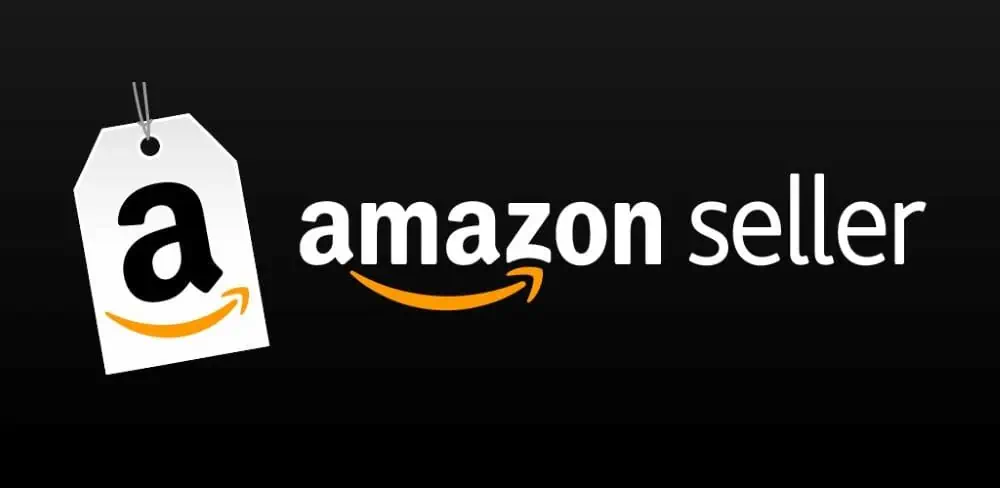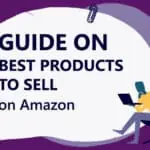What you’ll learn
Note: This is part 1 of a 2-part series. Read part two here when it’s published.
Are you ready to unlock the potential of selling on Amazon without the hassle of managing inventory?
Imagine building a thriving online business empire, where you have control and freedom to focus on what you do best – marketing and selling.
In this article, we will guide you through the landscape of inventory-less selling on Amazon, providing you with the tools and strategies necessary for success.
As an aspiring entrepreneur, you may dream of achieving mastery in ecommerce selling. The idea of running a profitable business without having to deal with physical inventory can seem like a distant fantasy. But fear not!
With the right knowledge and techniques, you can turn this dream into reality. From setting up your Amazon Seller Account to selecting your niche and products, we will walk you through each step of the process so you can sell on Amazon without having to worry about funding, warehouse storage, shipping services or even physical inventory management.
Get ready to embark on a journey towards financial independence and fulfillment as we unveil the secrets behind selling on Amazon without inventory.
Introduction – How to Sell on Amazon Without Inventory
In this discussion, we’ll explore these key points to help you understand the landscape of inventory-less selling on Amazon.
The Evolution of E-commerce
With the rise of e-commerce, the way customers shop online has drastically changed over time. Gone are the days of physically browsing through stores to find what customers need. Now, customers have the power to search for and purchase products with just a few clicks.
And one platform that has truly revolutionized online shopping and selling products online is Amazon. But did you know that you can actually sell on Amazon without having any inventory?
Yes, it’s true! If you’re wondering how to make money selling on Amazon without inventory, then keep reading because I’m about to reveal some secrets.
Selling on Amazon without inventory may seem like a daunting task at first, but it’s actually quite simple once you understand the process.
One popular method is called Dropshipping, where instead of keeping stock of the products yourself, you partner with a supplier who will handle all the shipping and fulfillment for you.
All you need to do is list their products on your Amazon store and promote them to potential customers. This means that you don’t have to worry about storing or shipping any products yourself. It’s a great option if you’re looking for a low-risk way to start your own business and make money online.
So if you’ve ever wondered how to sell on Amazon without inventory, now you know that it’s possible with methods like dropshipping.
Benefits and Challenges of Inventory-less Selling
Imagine the freedom of running your own online store and never having to worry about managing stock or storing products yourself. With inventory-less selling on Amazon, you can experience just that. This innovative approach allows you to focus on what you do best – marketing and selling – without the hassles and costs associated with traditional inventory management.
One of the key benefits of inventory-less selling is the ability to scale your business without limitations. You don’t have to worry about investing in large quantities of products upfront or dealing with the risks of slow-moving inventory. Instead, you can list a wide range of products on Amazon’s marketplace and leverage their vast customer base to drive sales. This means that as your business grows, so does your potential for profits.
However, it’s important to acknowledge the challenges that come with this model as well. Without physical control over your inventory, there is a higher risk of stockouts or delayed deliveries if your suppliers fail to fulfill orders promptly. Additionally, competition can be fierce since anyone can start an online store without needing significant capital investment upfront. To succeed in this space, you need to differentiate yourself through exceptional customer service, effective marketing strategies, and staying ahead of industry trends.
Inventory-less selling on Amazon offers an exciting opportunity for entrepreneurs who want to run their own online retail stores, without the burdensome task of managing stock themselves. While it comes with its unique set of challenges, mastering this model can lead to unlimited growth potential and financial success in the e-commerce world. So why not take advantage of this freedom and unleash your entrepreneurial spirit today?
Popular Methods: Dropshipping, Print-on-Demand, FBA, FBM
One of the most popular methods that entrepreneurs are using to run their online stores is the dropshipping model. With a dropshipping solution, you can focus on marketing and selling products without having to worry about managing inventory. This method allows you to partner with suppliers who handle the storage, packaging, and shipping of products directly to your customers.
Dropshipping offers several benefits for those looking to sell on Amazon without inventory. Firstly, it eliminates the need for a large upfront investment in inventory, which can be a significant barrier for many aspiring entrepreneurs. You don’t have to worry about stocking up on products or dealing with excess inventory that might not sell.
Secondly, the dropshipping service allows you to offer a wide range of products without the limitations of physical or warehouse storage space. You can easily add new product lines or test out different niches without committing to holding stock.
Lastly, this method gives you more time and freedom to focus on other aspects of your business such as marketing and customer service.
Another popular method for selling on Amazon without inventory is print-on-demand (POD). With POD, you can create custom-designed products like t-shirts, mugs, or phone cases that are only produced when an order is placed. This eliminates the need for pre-printing or holding any physical stock. Similar to dropshipping, POD allows you to concentrate on promoting your designs and building your brand while leaving the manufacturing and fulfillment process in the hands of specialized printing companies.
Whether through inventory selling through a dropshipping service or print-on-demand services like FBA (Fulfillment by Amazon) or FBM (Fulfilled by Merchant), there are various ways for entrepreneurs to thrive in online selling without worrying about managing traditional inventory.
These methods provide flexibility and convenience while allowing sellers to focus on what they do best – marketing their products effectively and delivering exceptional customer experiences.
So why wait? Start exploring these options today and take control of your journey toward mastery in online sales!
Getting Started: Setting Up Your Amazon Seller Account

To get started with selling on Amazon, you need to choose the right seller plan that best suits your needs and goals.
Once you’ve made your choice, you can register your seller account and gain access to the Amazon Seller Dashboard.
This dashboard will be your central hub for managing your inventory, monitoring sales, and tracking customer feedback.
Choosing the Right Amazon Seller Plan
When selecting the appropriate Amazon seller plan, it’s crucial to consider the specific needs and goals of your business. This decision will directly impact how you can sell digital products on Amazon without inventory.
Here are some key factors to keep in mind:
- Monthly Selling Fees: Different plans come with different fees, so it’s important to choose one that aligns with your budget and profit margins.
- Fulfillment Options: Depending on your plan, you can opt for either Fulfilled by Amazon (FBA) or Fulfilled by Merchant (FBM). Consider which option suits your business model better.
- Access to Tools and Reports: Look for a plan that provides access to helpful tools and reports that can assist you in managing your inventory, tracking sales performance, and optimizing listings.
- Product Category Restrictions: Some plans have category restrictions, so make sure the plan you choose allows you to sell the types of products that are relevant to your business.
- Scalability: If you have plans to expand or grow your business in the future, select a plan that offers scalability options so you can easily upgrade as needed.
By carefully considering these factors when choosing an Amazon seller plan, you’ll set yourself up for success in selling on Amazon without inventory. Keep in mind that finding the right fit may require some trial and error, but with persistence and a commitment to mastery, you’ll be well on your way to achieving your goals.
Registering Your Seller Account
Getting started with your seller account registration is an exciting step towards achieving your goals and becoming a successful online entrepreneur. It’s the first essential step in starting your journey to begin selling something on Amazon without inventory.
Registering your seller account is a straightforward process that allows you to create a professional presence on the marketplace.
To begin selling, simply visit Amazon’s Seller Central website and click on the ‘Register Now’ button. You’ll be prompted to provide some basic information about yourself and your business, such as your name, email address, and phone number. Make sure to enter accurate details, as this will be used for communication purposes with Amazon and potential customers.
Once you’ve completed this initial step, you’ll need to choose between two types of seller accounts: Individual or Professional. The type of account you select will depend on the volume of products you plan to sell. If you’re just starting out or have a small number of products, an Individual account may be suitable. However, if you anticipate higher sales volume or want access to additional features like bulk listing tools and custom shipping rates, consider opting for a Professional account.
By registering your seller account, you’re taking the first major step towards mastering the art of selling on Amazon without inventory. It opens up countless opportunities for growth and success in the world of e-commerce.
So don’t hesitate, start your journey today by completing the simple registration process and join thousands of entrepreneurs who’ve already found success through selling on Amazon!
Navigating the Amazon Seller Dashboard
Once you’re registered as a seller, navigating the Amazon Seller Dashboard is like having a compass that guides you towards success in the world of e-commerce. This powerful tool allows you to manage your inventory, track sales, and monitor customer feedback all in one place.
With just a few clicks, you can easily update product details, adjust pricing, and analyze your performance metrics. The intuitive interface makes it simple for even the most novice sellers to find their way around.
The Amazon Seller Dashboard gives you real-time access to valuable data that can help you make informed decisions and optimize your selling strategy. You can keep an eye on your daily sales and revenue trends, identify which products are performing best, and even monitor customer reviews.
This information empowers you to quickly adapt to market demands and stay ahead of the competition. With features like inventory management tools and order fulfillment options at your fingertips, navigating the Amazon Seller Dashboard becomes second nature as you strive for mastery in the art of online selling.
Selecting Your Niche and Products

When selecting your niche and products on Amazon, it’s important to conduct market research to identify profitable niches.
You can use product research tools and strategies to find products that have a high demand and low competition.
Additionally, it’s crucial to consider legal considerations and restricted categories to ensure you comply with Amazon’s policies and regulations.
Market Research: Identifying Profitable Niches
Researching profitable niches on Amazon can be like uncovering hidden treasure in a vast marketplace. As you delve into the world of market research, here are four tips to help you navigate and identify those lucrative niches:
- Follow your passion: Start by exploring areas that genuinely interest you. When you’re passionate about a niche, you’ll naturally have more knowledge and insight into what customers want within that market.
- Analyze customer reviews: Dive deep into customer reviews for products within your potential niche. Pay attention to recurring themes or issues mentioned by customers. This’ll give you valuable insights into what improvements can be made or untapped opportunities that exist.
- Study best-selling products: Look at the top-selling products in different categories related to your niche. Take note of their features, pricing strategies, and branding techniques. Understanding what makes these products successful’ll provide guidance for developing your own winning strategy.
- Keep an eye on trends: Stay up-to-date with current trends and identify emerging markets that show potential for growth. By spotting new trends early on, you can position yourself as a leader within the niche before it becomes saturated with competitors.
By following these steps and continuously honing your research skills, you’ll become adept at identifying profitable niches on Amazon and maximize your chances of success in selling without inventory. Remember, mastery is built over time through consistent effort and a willingness to adapt as the marketplace evolves.
Product Research Tools and Strategies
To maximize your chances of success in finding profitable niches, you need to utilize product research tools and strategies that will help you uncover hidden gems in the vast marketplace. These tools can save you time and effort by providing valuable insights into customer demand, competition levels, and market trends.
By analyzing data from these tools, you can make informed decisions about which products to sell on Amazon without inventory.
One effective strategy is to use keyword research tools to identify popular search terms related to your niche. This will give you an idea of what customers are looking for and how competitive the market is for those particular keywords.
Additionally, you can use product research tools that provide information on sales rankings, customer reviews, and pricing history. This data will help you gauge the potential profitability of a product and assess whether it’s worth entering that specific niche.
By combining these tools with your own intuition and knowledge of the market, you’ll be able to uncover profitable niches that others might overlook. Remember, success in selling on Amazon without inventory requires continuous learning and adaptation.
Keep experimenting with different strategies and stay up-to-date with market trends to maintain a competitive edge in this ever-evolving landscape.
Legal Considerations and Restricted Categories
Navigating legal considerations and restricted categories can be a challenging but necessary aspect of finding profitable niches. As an Amazon seller, it’s crucial to understand the rules and regulations set by the platform to avoid any potential legal issues.
Here are four key points to keep in mind when it comes to legal considerations and restricted categories:
- Research Restricted Categories: Take the time to familiarize yourself with the list of restricted categories on Amazon. These include items like firearms, prescription drugs, and hazardous materials. By knowing what you can’t sell, you can focus your efforts on finding profitable niches within the allowed categories.
- Trademark Infringement: Be cautious not to violate trademarks when sourcing products for your Amazon business. Ensure that the products you plan to sell don’t infringe on any existing trademarks or copyrights. This’ll help you avoid potential lawsuits or having your listings taken down.
- Intellectual Property Rights: Respect intellectual property rights by avoiding counterfeit or unauthorized products. Selling knock-off items may lead to legal consequences and damage your reputation as a seller. Always source from reliable suppliers and verify the authenticity of the products before listing them on Amazon.
- Compliance with Regulations: Stay up-to-date with relevant laws and regulations regarding product safety, labeling requirements, and certifications for specific categories like electronics or dietary supplements. Complying with these regulations not only ensures legality but also builds trust among customers who prioritize quality and safety.
By understanding these legal considerations and adhering to them diligently, you can navigate through potential obstacles while finding profitable niches on Amazon without compromising your integrity as a seller.
Dropshipping on Amazon: A Detailed Guide

In this discussion, we’ll explore the topic of dropshipping on Amazon.
You’ll learn what dropshipping is and how to find reliable dropshipping suppliers.
Additionally, we’ll cover the process of setting up your dropshipping website’s products and business on Amazon, managing inventory and order fulfillment, as well as implementing effective pricing strategies for your dropshipping products.
What is Dropshipping?
Imagine yourself as an online entrepreneur, effortlessly running your own business by dropshipping products on Amazon without ever having to worry about inventory.
Dropshipping is a business model that allows you to sell products online without actually keeping them in stock. Instead, when a customer places an order, you simply purchase the item from a third party logistics third-party supplier who then ships it directly to the customer.
This means you don’t have to deal with the hassle of storing or shipping products yourself.
With a dropshipping solution, you have the freedom to focus on what matters most: growing your business and making sales. You can spend your time and energy on marketing strategies, building relationships with customers, and finding new profitable niches.
By leveraging Amazon’s massive customer base and infrastructure, you can tap into their vast network of buyers and reach a global audience.
The best part is that there are no upfront costs or inventory risks involved. You only pay for the products once you’ve already made a sale, which greatly reduces financial risk and allows for scalability.
So unleash your entrepreneurial spirit and start dropshipping on Amazon today – it’s a path towards mastery in the world of e-commerce!
Finding Reliable Dropshipping Suppliers
Now that you understand the concept of dropshipping, it’s time to dive into finding reliable dropshipping suppliers. This step is crucial in ensuring your success as a seller on Amazon without inventory. By partnering with trustworthy suppliers, you can guarantee the timely delivery of high-quality products to your customers, ultimately building a reputation for yourself and boosting your sales.
To find reliable dropshipping suppliers, start by conducting thorough research. Look for suppliers who have a proven track record of delivering products on time and providing excellent customer service. Check out online directories and marketplaces specifically designed for connecting sellers with dropshipping suppliers. These platforms often include reviews and ratings from other sellers, giving you valuable insights into each supplier’s reliability.
Additionally, reach out directly to potential suppliers and ask questions about their shipping methods, product availability, and return policies. A reputable supplier will be responsive, transparent, and willing to work with you to ensure mutual success. Don’t be afraid to negotiate terms that benefit both parties involved – remember that this is a partnership built on trust.
By dedicating time and effort into finding reliable dropshipping suppliers, you’re taking a significant step towards mastering the art of selling on Amazon without inventory. With the right partners by your side, you can confidently provide top-notch products to your customers while focusing on growing your business further. So keep searching for those trustworthy suppliers who align with your goals and watch as your Amazon venture flourishes!
Setting Up Your Dropshipping Business on Amazon
Start by creating a seamless dropshipping business on the world’s largest online marketplace, where you can effortlessly connect with suppliers and provide top-quality products to customers without the hassle of managing inventory.
Setting up your dropshipping business on Amazon is a straightforward process that allows you to tap into a vast customer base and maximize your earning potential. You’ll first need to create an Amazon seller account and choose the professional selling plan that suits your needs. This will give you access to additional features, such as bulk listing tools and advanced analytics, to help scale your business.
Next, it’s crucial to find reliable suppliers who will fulfill orders directly to your customers. Look for suppliers with a good track record in terms of product quality, shipping times, and customer service. Utilize Amazon’s integrated supplier directory or explore other reputable platforms like AliExpress or Oberlo. Once you’ve found suitable suppliers, establish clear communication channels with them to ensure smooth order fulfillment.
To optimize your performance on Amazon, focus on creating compelling product listings that stand out from the competition. Write detailed and persuasive product descriptions that highlight the benefits and unique selling points of each item. Use high-quality images that showcase the product from multiple angles and include any relevant certifications or awards.
In addition to optimizing your listings, actively manage quality customer service reviews by promptly addressing any issues or concerns raised by buyers. Providing excellent customer service is key to building trust and loyalty among your audience.
By following these steps and continuously improving your dropshipping business on Amazon, you’ll be well on your way towards mastering this lucrative e-commerce model while enjoying the freedom of running a location-independent venture.
🗣️ Pro Tip: Focus on creating compelling product listings. Use high-quality images.
Inventory Management and Order Fulfillment
Efficiently managing your inventory and fulfilling customer orders is crucial for ensuring a seamless shopping experience that leaves your customers delighted and coming back for more.
As a dropshipper on Amazon, it’s important to have a solid system in place to track your inventory levels accurately. This will help you avoid overselling or running out of stock, which can lead to frustrated customers and negative reviews.
One way to effectively manage your inventory is by utilizing software or tools that integrate with Amazon’s platform. These tools can automatically update your inventory levels across multiple sales channels, making it easier for you to keep track of what products are available and when you need to reorder.
Additionally, implementing an efficient order fulfillment process is essential. This involves promptly processing orders as they come in, ensuring accurate packaging and labeling, and arranging for timely shipping.
By efficiently managing your inventory and fulfilling customer orders with precision, you can provide a satisfying shopping experience that keeps customers coming back for more.
Remember, mastering the art of inventory management and order fulfillment is key to building a successful dropshipping business on Amazon.
Pricing Strategies for Dropshipping
To maximize your profits and attract customers, it’s important to employ effective pricing strategies when dropshipping. One strategy is to conduct thorough market research to understand the competitive landscape and determine the optimal price point for your products.
This involves analyzing similar products in the market and finding a balance between being competitive on price and profit margins while maintaining profitability.
Another effective strategy is to offer discounts or bundle deals to entice customers. By offering a discounted price or creating bundles with complementary products, you can encourage customers to purchase more items at once, increasing your overall sales volume.
Additionally, consider implementing dynamic pricing, where you adjust prices based on factors such as demand or competitor pricing. This allows you to stay agile in the market and maximize your profits.
By employing these pricing strategies, you can create an enticing offer that will attract customers while also ensuring you maintain a healthy profit margin. Remember, mastering the art of pricing is crucial in the world of dropshipping, so take the time to analyze your market, experiment with different strategies, and continuously optimize your prices for maximum success.
Customer Service and Returns
Now that you’ve mastered the art of pricing strategies for dropshipping, it’s time to delve into the world of customer service and returns. As an Amazon seller without inventory, providing exceptional customer service is crucial to building a loyal customer base and ensuring repeat business.
When it comes to dropshipping, your role as a seller extends beyond just listing products on your store – you become the face of your business, responsible for handling any inquiries or concerns that may arise.
One of the key aspects of excellent customer service is prompt and effective communication. Responding to customer queries in a timely manner not only shows professionalism but also builds trust with your customers. Make sure to address their concerns with empathy and offer solutions that satisfy their needs.
Additionally, be proactive in keeping your customers informed about any delays or issues that may affect their orders. By being transparent and honest, you can manage expectations and maintain a positive relationship with your customers.
Returns are an inevitable part of any serious ecommerce sales and-commerce business, including dropshipping. While it may seem daunting at first, handling returns effectively can actually work in your favor by enhancing customer satisfaction.
Be clear about your return policy from the start, ensuring it is easily accessible on your website or product listings. This helps set expectations for customers and minimizes confusion when they need to initiate a return.
When processing returns, aim for simplicity and convenience – provide clear instructions on how to return items and ensure prompt refunds or replacements are issued once the returned products are received.
By mastering customer service and returns in the realm of dropshipping on Amazon without inventory, you’ll not only build a solid reputation but also create loyal customers who will keep coming back for more.
Remember that exceptional customer service goes hand-in-hand with successful selling – always prioritize meeting your customers’ needs while maintaining transparency throughout the process.
With these skills under your belt, you’re well on your way to becoming a masterful seller in the world of e-commerce!
🗣️ Pro Tip: Always be clear about your return policy from the beginning.
Scaling Your Dropshipping Business
Take your dropshipping business to new heights by scaling it up and reaching even more customers, expanding your profits, and creating a thriving online empire.
Scaling your dropshipping business can be an exciting journey that allows you to tap into the vast potential of e-commerce. Here are three key strategies to help you take your business to the next level:
- Leverage automation: As your business grows, it becomes crucial to automate various aspects of your operations. Utilize tools and software that can streamline order processing, inventory management, and customer support. By automating repetitive tasks, you free up valuable time and resources to focus on strategic decision-making and expanding your product range.
- Expand product offerings: To attract a wider customer base and increase sales opportunities, consider expanding your product offerings. Research trending products or niche markets with high demand but low competition. By diversifying your product range, you create multiple streams of income while catering to different customer preferences.
- Invest in marketing: Scaling your dropshipping business requires effective marketing strategies to reach a larger audience. Allocate a portion of your profits towards targeted advertising campaigns on platforms like social media or search engines. Optimize product listings with compelling descriptions, high-quality images, and positive customer reviews. Building brand awareness through influencer collaborations or content marketing can also help drive organic traffic to your store.
By implementing these strategies and continuously optimizing your processes, you’ll be well on your way to scaling up your dropshipping business successfully. Keep learning from industry experts and stay updated with the latest trends in e-commerce for continued growth and mastery in the online marketplace.
Print-on-Demand: Customizing and Selling Unique Products

If you’re looking to sell unique products on Amazon without having to hold inventory, the print-on-demand model is worth exploring.
With this model, you can design or source custom products that are personalized and cater to specific niches.
By integrating print-on-demand services with Amazon, you can easily list and market your customized products, while also managing customer expectations and ensuring their satisfaction.
Exploring the Print-on-Demand Model
Discover how you can easily sell products on Amazon without the hassle of inventory through the exciting print-on-demand model. With print-on-demand, you have the power to create and customize unique products that resonate with your target audience. Gone are the days of investing in large quantities of inventory and taking on the risk of unsold items.
Print-on-demand allows you to tap into your creativity and design one-of-a-kind products that people will love. Whether it’s t-shirts, mugs, or phone cases, you can easily upload your designs to a print-on-demand platform and start selling them on Amazon. The best part is that these platforms handle all aspects of production, from printing to shipping, so you can focus on what you do best – creating amazing designs.
By leveraging the print-on-demand model, you can turn your passion for design into a profitable business without worrying about inventory management. So why wait? Start exploring this exciting opportunity today and unleash your creative potential!
Designing or Sourcing Custom Products
Now that you understand the print-on-demand model, it’s time to take your selling on Amazon without inventory to the next level.
In this exciting new subtopic, we’ll explore the art of designing or sourcing custom products. This is where your creativity and business acumen will truly shine!
Designing custom products allows you to create unique and personalized items that customers can’t find anywhere else. Whether it’s a t-shirt with a catchy slogan or a phone case featuring stunning artwork, the possibilities are endless.
With print-on-demand services, you don’t need any design experience – simply use user-friendly software to bring your ideas to life. Alternatively, if you’re not artistically inclined, you can also source custom products from manufacturers who specialize in creating one-of-a-kind items.
By offering exclusive designs or products that resonate with your target audience, you’ll attract customers who are willing to pay a premium for something special.
With this knowledge in hand, you’re well on your way to mastering the art of selling on Amazon without inventory. The ability to design or source custom products gives you a competitive edge and sets you apart from other sellers.
Embrace this opportunity for creative expression and let your imagination run wild as you curate an irresistible selection of unique merchandise.
Remember, success comes to those who dare to be different!
🗣️ Pro Tip: Create unique items. Be different!
Integrating Print-on-Demand Services with Amazon
Immerse yourself in the seamless integration of print-on-demand services with your Amazon store, unlocking a world of endless possibilities for unique and personalized products.
With print-on-demand, you can easily create custom designs or choose from a wide range of ready-made designs to apply on various products like t-shirts, mugs, phone cases, and more. This allows you to offer your customers one-of-a-kind items that stand out from the competition.
In this exciting realm of print-on-demand, you have the power to unleash your creativity and cater to niche markets. The possibilities are limitless!
Here’s how integrating print-on-demand services with Amazon can help you achieve mastery:
- Design Freedom: With access to an extensive library of design templates and tools, you can let your imagination run wild. Experiment with different color combinations, patterns, and typography to create visually stunning products.
- Minimal Risk: Since there is no need for upfront inventory investment when using print-on-demand services, you can test new design ideas without worrying about excess stock or financial risk.
By harnessing the potential of print-on-demand services within your Amazon store, you can tap into the demand for unique and personalized digital products while minimizing the risks associated with traditional inventory-based selling models.
So go ahead and explore this exciting opportunity – it’s time to master the art of creating customized merchandise that’ll captivate your customers’ hearts.
Comments
Related Posts
Mastering Shopify’s UTMs: The Simple Way to Smarter Marketing
Let’s be honest: marketing your Shopify store without tracking what’s…

10 Profitable Product Categories for Amazon Affiliates 2025
What you’ll learn Amazon is a favorite for experienced and…

Unlock the Secret to a Profitable Automated Amazon Store: How to Build a Hands-Free Income Stream
Ever dreamed of running a profitable Amazon business while sipping…







Leave a Reply